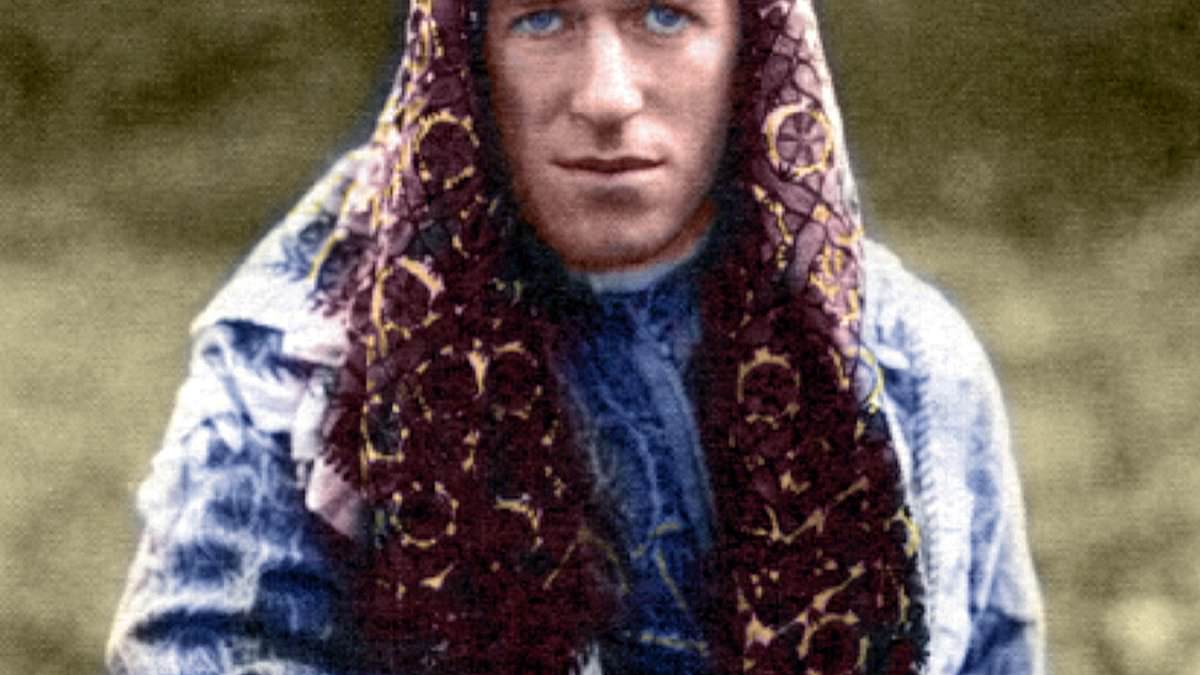QUESTION: Are there any statues in the UK or abroad of Lawrence of Arabia?
There are no major national or international memorials to Lawrence. His effigy, however, can be found in the parish church of St Martin, in Wareham, Dorset.
T. E. Lawrence (1888-1935), also known as Lawrence of Arabia, had a complex and strained relationship with the British government.
He helped foster the Arab Revolt during the First World War, in which the British promised Arab independence in exchange for their support against the Ottoman Empire.
He felt ‘continually and bitterly ashamed’ when Britain and France chose to divide the region for their own interests.
George V offered Lawrence a knighthood on October 30, 1918, at a private audience in Buckingham Palace, but he declined.
In 1922, Lawrence retreated from public life and served as an enlisted man in the Royal Air Force, then in the Tank Corps.
He published Seven Pillars Of Wisdom in 1926, an autobiographical account of his participation in the Arab Revolt. Lawrence lived his final years near Bovington army camp in Dorset in a cottage called Clouds Hill.
He tragically died on May 19, 1935, following a motorbike accident. His friend, the artist and sculptor Eric Kennington, was among a select group of people brought together to discuss a fitting memorial to Lawrence.
Lady Astor chaired the committee, which included his friend George Bernard Shaw.
The result is Kennington’s fine Crusader-style stone effigy. In the sculpture, Lawrence is portrayed wearing Arab robes. In his hand he clasps a traditional khanjar dagger and wears sandals on his crossed feet.
The effigy was offered to St Paul’s Cathedral but was refused, probably on political grounds, but also because they already had a bronze bust of Lawrence, also by Kennington, in the crypt.
The memorial was, it seems, as controversial as the man, and it was subsequently rejected for a place in Westminster Abbey and finally Salisbury Cathedral.
Arthur Wright, Paignton, Devon
QUESTION: Is there any possibility of the dodo being brought back into existence using Jurassic Park-style techniques?
The DODO (Raphus cucullatus), a flightless bird from the isle of Mauritius hunted by Europeans, could not be brought back from extinction by any current technology.
The dinosaurs in Jurassic Park are brought back by finding their DNA preserved in mosquitos that had fed on the animals and then got trapped in amber.
Amber is fossilised tree resin that preserves insects by sealing them. It’s an ingenious plot device, but DNA breaks down over time and it is not thought that this would work in practice.
DNA degenerates at a constant rate in normal conditions. By some calculations, half could be lost in 500 years.
There would be no dinosaur DNA left in the samples in Jurassic Park. To recreate the dodo, its whole genome would need to be known.
Even with the genome information, there is no current way it could be reconstructed in its entirety and placed in, say, a pigeon’s egg, replacing the original nucleus, as in some cloning methods.
DNA editing technologies may provide solutions to some genetic diseases, but the ability to recreate a whole complex organism does not exist.
There have been suggestions of trying to recreate mammoths using cellular material from deep frozen specimens, but even here the DNA is likely to be too degraded. As things stand, extinction is forever.
Phil Alexander, Farnborough, Hampshire
QUESTION: Does anyone remember a drama about an alcoholic football player who is offered redemption by a young manager who idolised him?
Further to the earlier answer, the film Yesterday’s Hero featured Ian McShane’s character playing for ‘The Saints’, the nickname of real life Southampton FC.
Much of the match footage from his team’s Wembley appearance was spliced with actual footage from the 1979 League Cup Final between Southampton and Nottingham Forest, and the actors wore an exact replica of Southampton’s kit.
I may be the only person who owns a playable copy of the soundtrack album, which I picked up in a bargain basement bin. The title track was sung by Paul Nicholas, who starred in the film.
Tim Manns, PA Announcer, Southampton FC
